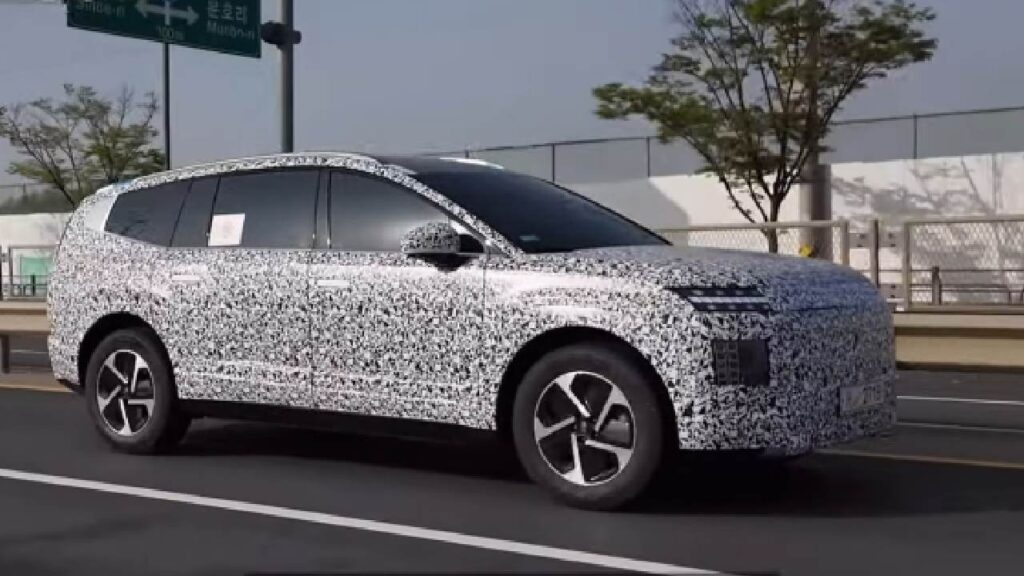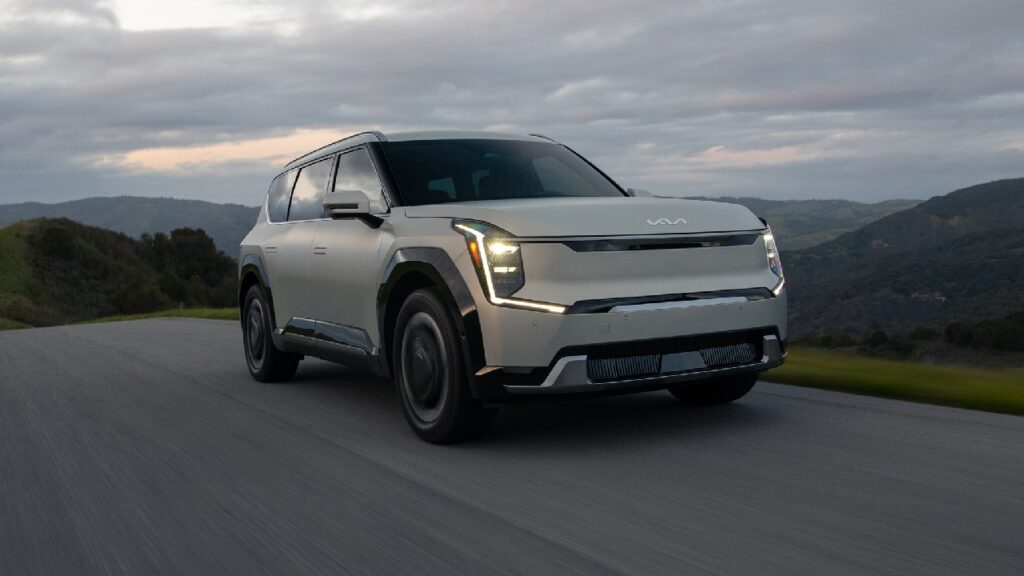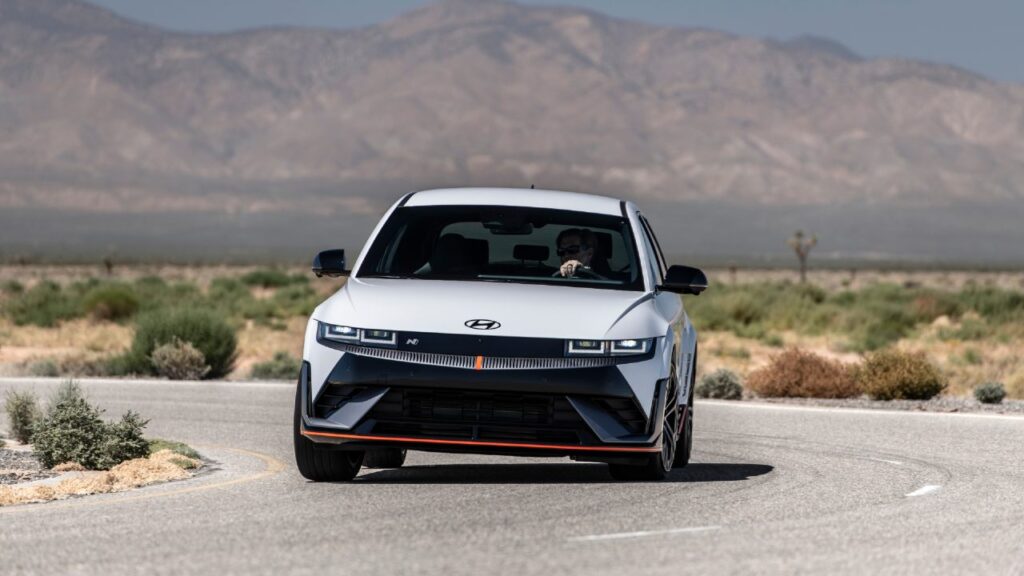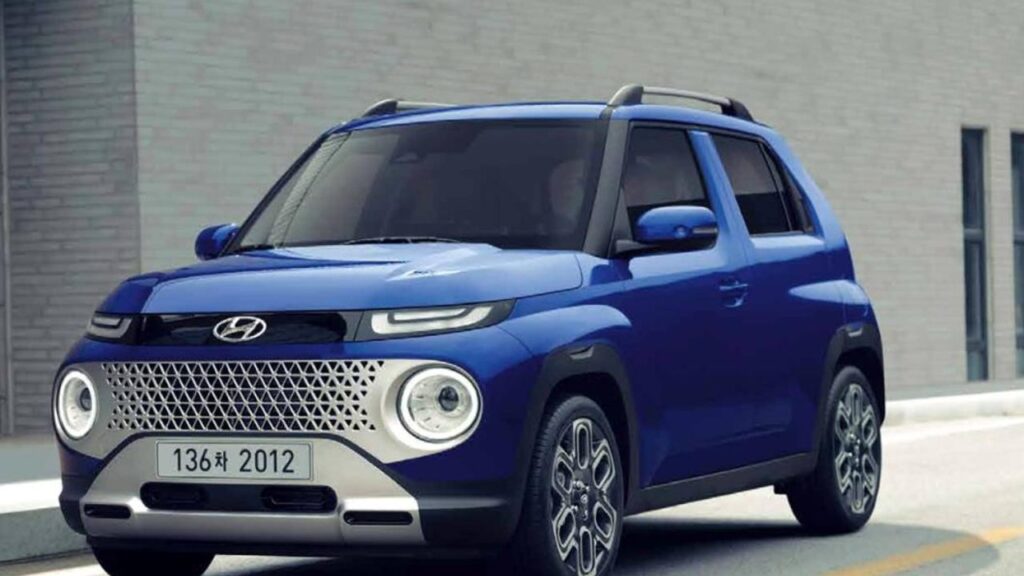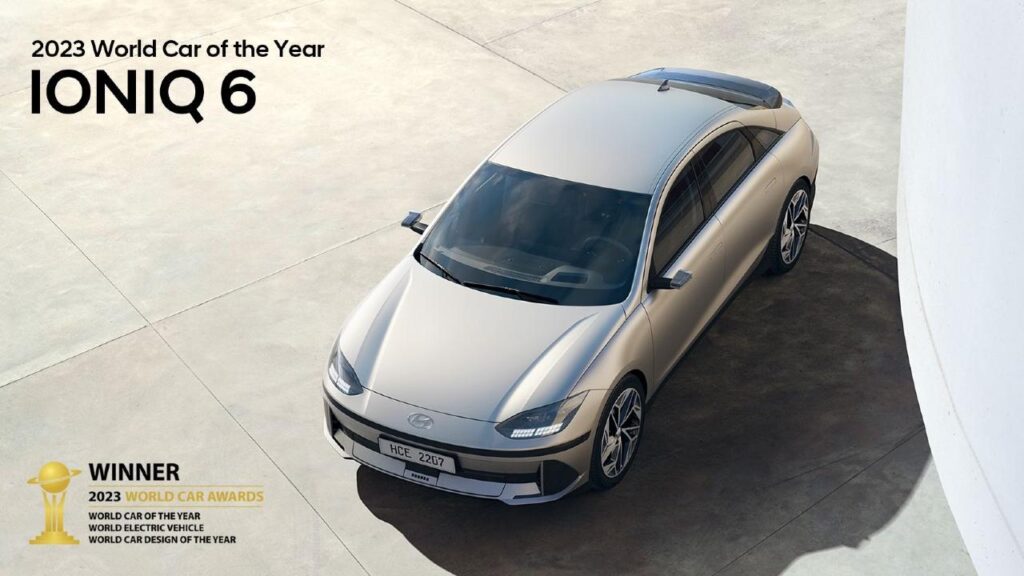Hyundai Ioniq 7 Electric SUV Spied Testing Ahead of June 27 Debut
The Hyundai counterpart to the already successful Kia EV9 is prepping for its official unveiling at the Busan Auto Show next month. Hyundai Ioniq 7 electric SUV will be the first 3-row BEV from the Korean auto giant. It is the production version of the Hyundai Concept SEVEN showcased back in 2021. Utilizing Hyundai’s recognized E-GMP architecture, the large SUV was seen testing on roads in its domestic market wearing a thick camouflage. The debut is slated for June 27 at the 2024 Busan Motor Show. The production will commence at Hyundai’s Asan plant in South Korea. I was able to squeeze out some design details from the latest spotting. You might also like: Hyundai To Launch New EV Brand In China; Plans 5 EVs In 3 Years Hyundai Ioniq 7 Electric SUV – Design I encountered the spy media on the Autospy portal. While the camouflage covers the body of the 7-seat EV, the front fascia reveals a split-LED headlamp setup. It includes LED DRLs on the bonnet bifurcating the headlamp cluster into two halves and another vertically-oriented LED headlamp unit on the bumper below. This layout bears a resemblance to the Concept SEVEN. On the sides, I find this alloy wheel design rather similar to what regular ICE Hyundai cars wear. I don’t believe this pattern will be carried forward to the production-spec version. That will likely have a design which will aid the aerodynamics of the electric SUV. In fact, we have seen such alloy wheels on the Ioniq 5 and Ioniq 6. The side profile even showcases large windows, flush-fitting door handles, black side pillars and a slightly sloping roofline toward the rear. Coming to the tail section, we experience a unique appearance with a boxy silhouette, and interesting LED taillamps which appear to cover the edges of the entire bootlid including the vertical section on the sides and a horizontal section on the top. Overall, the Hyundai Ioniq 7 will offer its distinct identity with a road presence unlike anything else. Hyundai Ioniq 7 Electric SUV – Specs While there have been no official announcements just yet, I expect it to share the powertrain options with the Kia EV9. The latter gets either a 76.1 kWh or a 99.8 kWh battery pack. In the most powerful dual-motor AWD settings, the EV9 makes a healthy 378 hp and 700 Nm of maximum power and torque. The official driving range is a decent 349 miles (562 km) as per WLTP. The 350 kW DC fast charging and 800-volt system allow recuperation of 154 miles (248 km) of range in just 15 minutes. In the regular single-motor RWD version, the peak power and torque are usable 200 hp and 350 Nm. Just like the EV9 GT, the Hyundai counterpart could see an N version down the line. More details will be revealed closer to the launch. Specs (exp.) Hyundai Ioniq 7 Battery 76.1 kWh or 99.8 kWh Drivetrain RWD / AWD Power 200 hp (RWD) / 378 hp (AWD) Torque 350 Nm (RWD) / 700 Nm (AWD) Range 349 miles (562 km) [WLTP] Platform E-GMP Charging 350 kW DC, 800-volt – 24 minutes (10-80%) Expected Specs You might also like: Kia Electric Pickup Truck Spied Testing, Looks Inspired By EV9 Learn Electric Cars Says I believe the Hyundai Motor Group is smartly crawling toward the top of the EV industry with its current products. I don’t need to tell you that electric cars from Hyundai and Kia have been immensely popular across the globe in the last couple of years. In fact, this is validated by the fact that they have bagged some prestigious awards from critics. In addition to that, the monthly sales of these EVs are a testament to how well the customers have embraced them. EVs like the Hyundai Ioniq 5, Hyundai Ioniq 6, Kia EV6 and Kia EV9 and becoming popular among the masses. Going forward, the Hyundai Ioniq 7 is about to join this list. Since it will largely share components, powertrains and features with the EV9, the chances of its success are high. I shall keep an eye out for more information about the Ioniq 7 as and when it appears. However, I must admit that things look positive for Hyundai’s iteration of the EV9.

